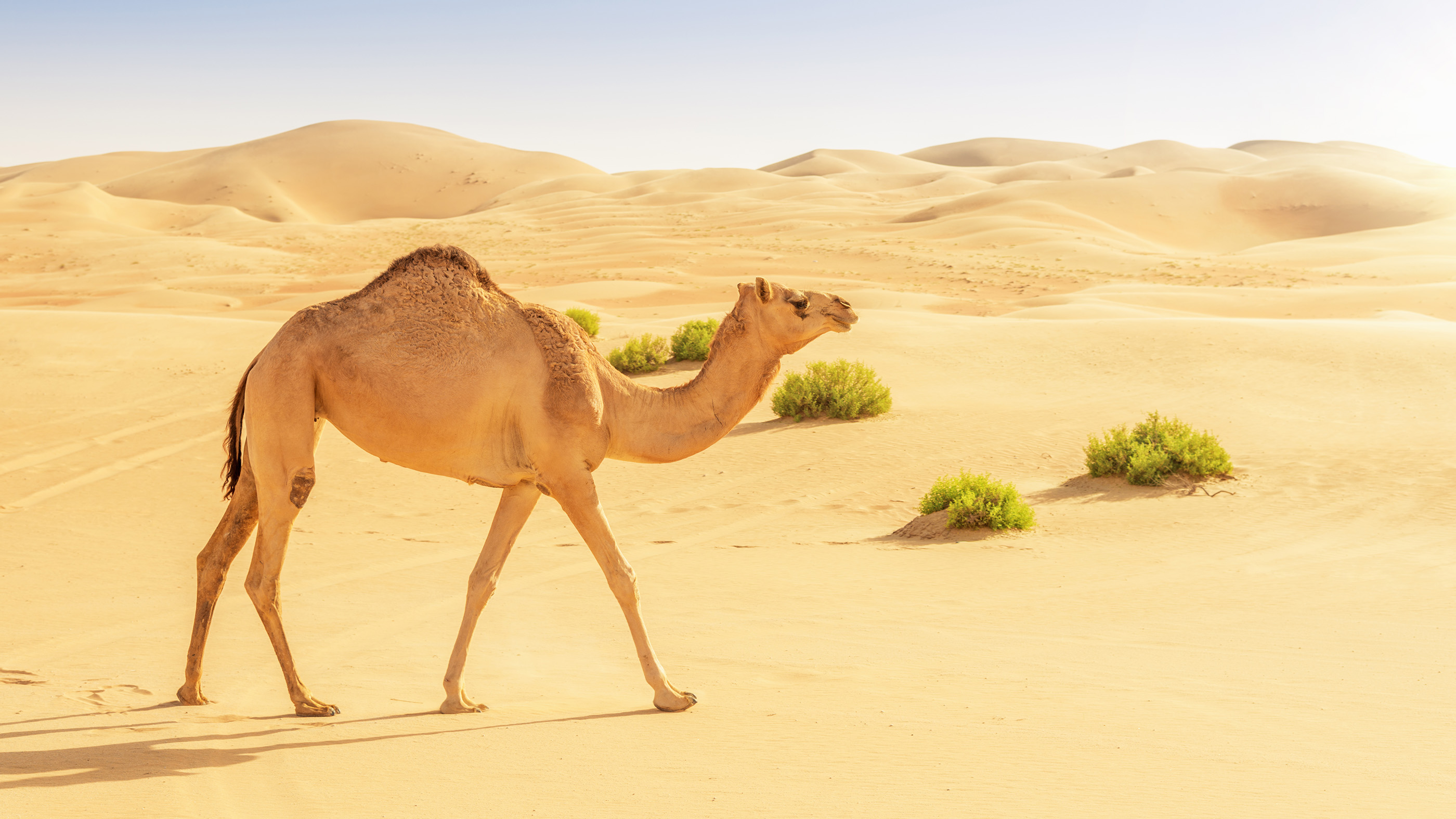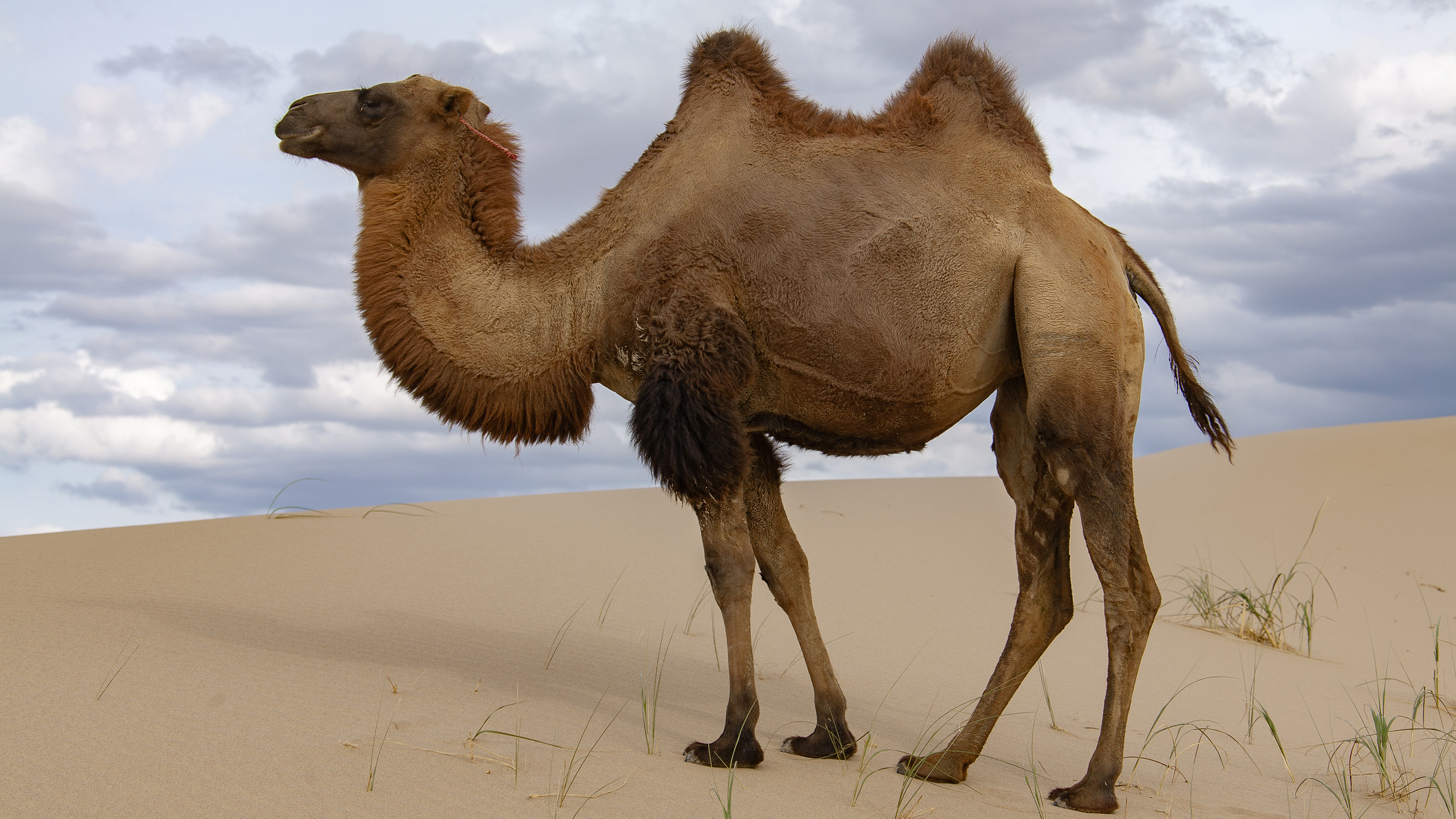
What do camels eat in the desert?
Camels are made for the harsh desert environment. They even have especially tough lips for thorny plants.

Camels survive in the driest, hottest, most barren spots on Earth. And somehow they manage to get enough food; but what do they eat in places that seem devoid of life?
All three species of camels — Camelus dromedarius, Camelus bactrianus and Camelus ferus — have evolved several adaptations to make desert-living possible, according to the Natural History Museum, London (NHM). In addition to the one or two humps they sport — which are made of fat and do not act as water tanks — they also specialized lips for desert foods.
They have a split upper lip, with each half moving separately to allow the animal to graze close to the ground to eat short grasses — a must in the desert where everything is slow-growing, according to the San Diego Zoo.
Their lips are also leathery and tough yet still flexible, which means camels can break off and eat both thorny and salty plants (such as saltbush), the zoo said. Fleshy protrusions called papillae also line their mouths to both protect the mouth from poke-y foods and help the camels manipulate and swallow that food, according to the NHM.
Related: 11 weird desert animals
Dromedary camels — which sport one hump — primarily eat "thorny plants, dry grasses and saltbush," the Oakland zoo reported, adding that the animals also will eat just about any desert plant available. Overall, these camels eat grasses, leaves and twigs from any plant in the desert, along with green shoots of the saxaul shrub in the genus Haloxylon, according to the San Diego Zoo Wildlife Alliance. In addition, they eat the stems and foliage from various desert shrubs in the genuses Salsola, Ephedra and Zygophyllum, according to the zoo alliance.

Bactrian camels (C. bactrianus and C. ferus) in Mongolia feed on Caragana, Haloxylon, Reaumuria and Salsola plants that grow there, the zoo alliance said.
Sign up for the Live Science daily newsletter now
Get the world’s most fascinating discoveries delivered straight to your inbox.
So what happens once they swallow their herbivorous meals? Camels have three to four stomachs; the food gets partially broken down in the first two stomachs before being regurgitated as cud and nommed on again, the zoo alliance said. Once it's swallowed and enters the other stomach (or two), that cud succumbs to the forces of several microbes that help with digestion.
And when food is not available, not to worry, as camels can survive for more than a week with no water and for months without food, according to PBS.
Originally published on Live Science.
Jeanna Bryner is managing editor of Scientific American. Previously she was editor in chief of Live Science and, prior to that, an editor at Scholastic's Science World magazine. Bryner has an English degree from Salisbury University, a master's degree in biogeochemistry and environmental sciences from the University of Maryland and a graduate science journalism degree from New York University. She has worked as a biologist in Florida, where she monitored wetlands and did field surveys for endangered species, including the gorgeous Florida Scrub Jay. She also received an ocean sciences journalism fellowship from the Woods Hole Oceanographic Institution. She is a firm believer that science is for everyone and that just about everything can be viewed through the lens of science.









